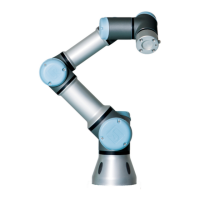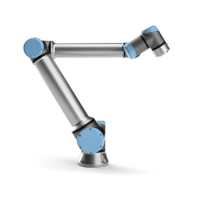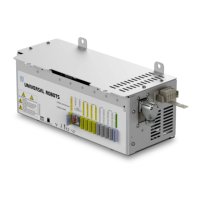13.11 Installation → MODBUS client I/O Setup
Here, the MODBUS client (master) signals can be set up. Connections to MODBUS servers (or
slaves) on specified IP addresses can be created with input/output signals (registers or digital).
Each signal has a unique name so it can be used in programs.
WARNING:
Accessing disconnected signals stops your program.
Refresh
Push this button to refresh all MODBUS connections. Refreshing disconnects all modbus units, and
connects them back again. All statistics are cleared.
Add unit
Push this button to add a new MODBUS unit.
Delete unit
Push this button to delete the MODBUS unit and all signals on that unit.
Set unit IP
Here the IP address of the MODBUS unit is shown. Press the button to change it.
Sequential mode
Available only when Show Advanced Options (see 13.11) is selected. Selecting this checkbox forces the
modbus client to wait for a response before sending the next request. This mode is required by some
fieldbus units. Turning this option on may help when there are multiple signals, and increasing
request frequency results in signal disconnects. Note that the actual signal frequency may be lower
than requested when multiple signals are defined in sequential mode. Actual signal frequency can
be observed in signal statistics (see section 13.11). The signal indicator will turn yellow if the actual
signal frequency is less than half of the value selected from the ”Frequency” drop-down list.
Add signal
Push this button to add a signal to the corresponding MODBUS unit.
Delete signal
Push this button to delete a MODBUS signal from the corresponding MODBUS unit.
Set signal type
Use this drop down menu to choose the signal type. Available types are:
Version 3.10
Copyright © 2009–2019 by Universal Robots A/S. All rights reserved.
II-51 CB3

